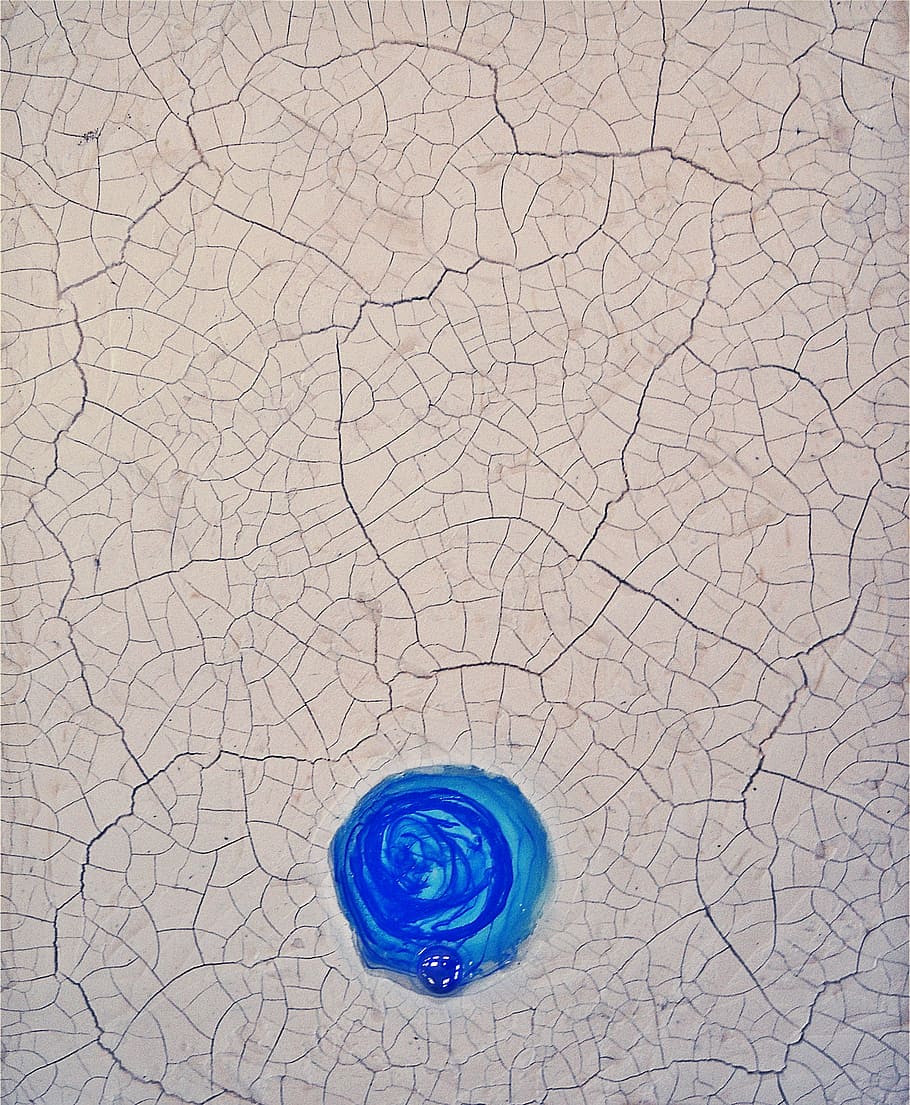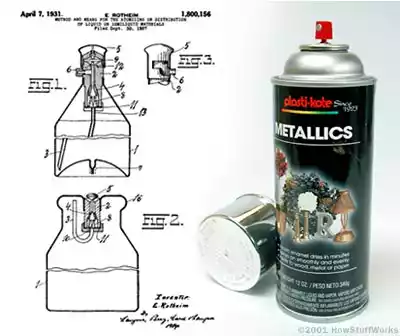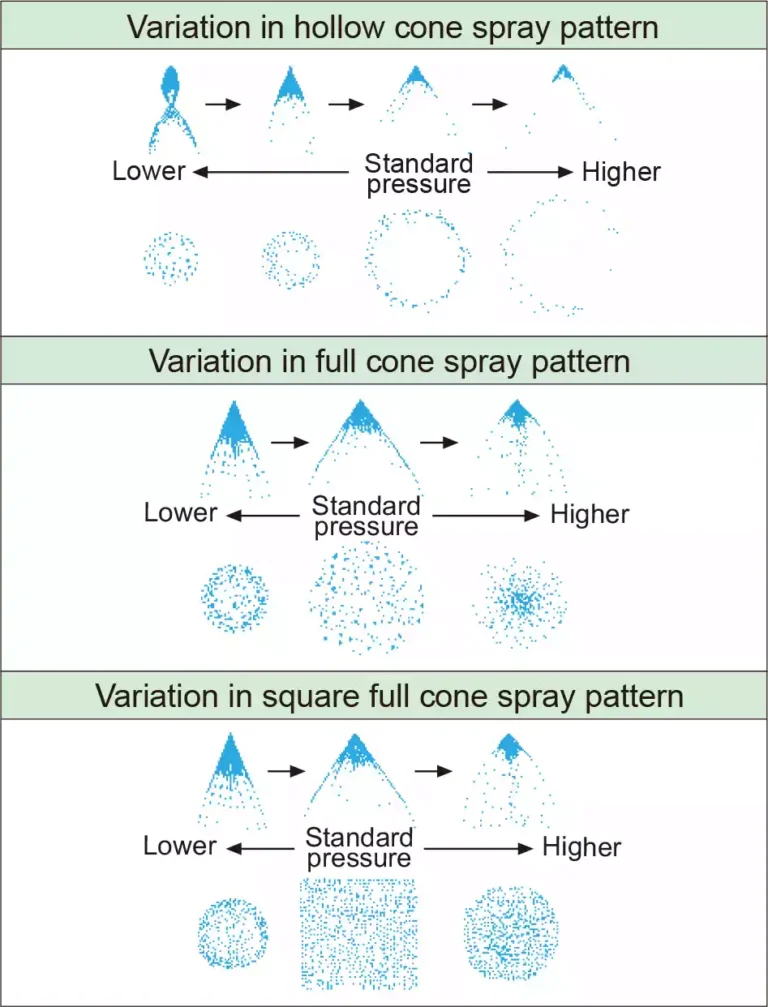Why Does Spray Paint Crackle? Guide to Understand & Preventing Cracking in Spray Paint
Spray paint, the go-to choice for countless painting projects offers unmatched versatility and popularity. However, amidst the allure lies a common adversary: paint cracking.
Picture the disappointment that ensues when your masterpiece falls prey to this vexing issue. Fear not, for in this captivating and all-encompassing guide, we shall unravel the mysteries behind spray paint cracking.
From misapplied strokes to incompatible surfaces and the ever-tempestuous environment, we’ll leave no stone unturned. Brace yourself for a transformative journey as we arm you with foolproof techniques, step-by-step instructions, and the wisdom to thwart this relentless nemesis.
Together, we shall triumph over adversity, ensuring each spray paint endeavor culminates in a seamless and resilient finish. Prepare to elevate your craft to unparalleled heights!
Relevant Post: What Are 5 Effective Methods To Prevent Spray Paint From Dripping?
Understanding Why Does Spray Paint Crackle
a. Definition and Types of Cracks
When it comes to spray paint, cracking is the formation of visible lines or fissures on the painted surface, resembling small cracks. These cracks come in different sizes and patterns, depending on what causes them.
Two common types of cracks are alligatoring, which makes the paint surface look like the skin of an alligator, and hairline cracks, which are thin and barely noticeable. Understanding the various types of cracks can help you identify their root causes and find suitable solutions to address them effectively.
b. Common Causes of Spray Paint Cracking
Spray paint cracking can be attributed to several factors. One frequent cause is improper surface preparation, such as neglecting to remove old paint or not adequately sanding the surface. Inadequate priming can also lead to cracking because the paint may not adhere properly to the surface.
Another factor is the incompatibility between the paint and the substrate, which can result in cracking. Applying paint too thickly or too thinly can also cause cracks, as well as experience excessive temperature fluctuations during the drying process. Familiarizing yourself with these common causes will empower you to take preventive measures and achieve superior results in your spray paint projects.

c. Potential Risks and Consequences
The impact of paint cracking extends beyond the mere aesthetics of your project; it also affects its durability. Cracks create openings for moisture, dirt, and other contaminants to penetrate the surface, leading to further deterioration. In outdoor applications, cracking exposes the substrate to the elements, increasing the risk of corrosion or rot.
For indoor projects, cracked paint can harbor bacteria or mold, posing potential health risks. Therefore, it is crucial to address the causes of cracking and take preventive measures to ensure the longevity and high quality of your spray paint finishes. By doing so, you can safeguard both the appearance and structural integrity of your projects.
Preparation for Spray Painting
Step 1: Surface Preparation
To ensure your paint job lasts without any unsightly cracks, surface preparation is crucial. Begin by thoroughly cleaning the surface to eliminate any dirt, grease, or loose particles that could hinder adhesion. If there is existing paint, it’s essential to remove it entirely or sand it down, creating a rough surface that promotes better paint adherence.
Any holes or cracks should be filled using a suitable filler, followed by sanding the patched areas to achieve a smooth finish. Before proceeding with the painting process, double-check that the surface is dry and free of any contaminants.
Relevant Post: Spray Can Maintenance And Storage Tips
Step 2: Choosing the Right Paint
The choice of spray paint plays a significant role in preventing cracking and achieving a stunning end result. Take into account the material of the surface you plan to paint and select a paint specifically formulated to adhere well to that particular material.
It’s advisable to opt for high-quality spray paints that offer superior coverage and durability. To ensure compatibility with your project, carefully read the manufacturer’s instructions and recommendations. By using the appropriate paint, you can enhance adhesion and flexibility, significantly minimizing the risk of cracking.
Proper Application Techniques
Master the Art of Spray Painting: Equipment and Safety Precautions
If you want to achieve flawless results when spray painting, it’s essential to use the right equipment and take proper safety precautions. Don’t overlook these crucial steps:
Prepare Your Tools: Before starting, make sure your spray paint can and nozzle are clean and in excellent condition. A clogged nozzle or dirt can ruin your painting efforts. Take a moment to inspect and clean them if necessary.
Shake It Up: Give your spray paint can a vigorous shake to ensure the paint is well-mixed. This step is vital for achieving consistent color and coverage throughout your project.
Breathe Easy: Working in a well-ventilated area is paramount. If that’s not possible, consider wearing a respirator to protect yourself from inhaling any harmful fumes. Safety should always be your top priority.
Distance Matters: To achieve an even application, maintain a consistent distance between the spray can and the surface you’re painting. Experiment with different distances to find what works best for your project.
Practice Makes Perfect: Before diving into your main project, take the time to practice your spraying technique on a test surface. This will help you get comfortable and familiarize yourself with the equipment.
Secrets to a Seamless Finish: Tips for Achieving a Smooth and Even Coat
Now that you’re equipped with the knowledge of spray paint equipment and safety, let’s delve into the techniques that will give your project a professional touch:
Thin is In: Rather than applying one thick coat, opt for multiple thin coats. Allow each layer to dry completely before adding the next. This method ensures a smooth and even finish, as thick coats are prone to dripping and uneven drying.
Parallel Perfection: Hold the spray can parallel to the surface you’re painting. This angle allows for a consistent flow of paint and helps prevent runs and drips. Maintain a steady hand and avoid tilting the can during application.
Sweeping Success: Move your hand in a smooth, sweeping motion while spraying. Start slightly off the surface, then sweep across it in a continuous, fluid manner. Avoid stopping or hesitating in one area, as this can lead to uneven coverage and potential cracking.
Speed and Distance: Keep a consistent speed and distance as you spray. Rapid movements or varying distances can create splotches or uneven areas on your painted surface. Practice maintaining a steady pace for a flawless finish.
Environmental Factors and Cracking
Step 1: Temperature and Humidity Considerations
Creating the perfect finish with spray paint involves more than just skillful application. The surrounding environmental conditions can make a world of difference, influencing the outcome and the likelihood of unsightly cracks. To ensure a flawless result, it’s important to consider the temperature and humidity during the painting process.
Step 2: Ideal Conditions for Spray Painting
For optimal results, aim to spray paint within a temperature range of 50°F to 90°F (10°C to 32°C). This sweet spot allows the paint to dry at a desirable pace, preventing issues like cracking. Additionally, it’s crucial to keep the relative humidity below 85%. High levels of humidity can impede the drying process, increasing the risk of cracks forming on the painted surface.
Step 3: Beware of Extreme Temperatures and High Humidity
Extreme weather conditions can be a challenge to work with, but there are strategies to mitigate their impact on spray paint drying. In hot weather, consider painting during the cooler parts of the day or provide shade to the freshly painted surface.
By doing so, you can prevent the paint from drying too quickly and reduce the likelihood of cracks. On the other hand, in cold weather, allow ample drying time and consider providing warmth to aid the curing process. This can be done by using heaters or ensuring the painted object is kept in a warm environment.
Step 4: Coping with High Humidity
When faced with high humidity, it’s advisable to take measures to facilitate quicker drying. Consider using a dehumidifier or fan to circulate air in the painting area. Improved air circulation helps remove excess moisture from the environment, assisting in the drying process and minimizing the risk of cracks.
Troubleshooting and Solutions
a. Uncovering Cracking Patterns and Unveiling Their Causes
When confronted with the frustrating issue of paint cracking, it becomes crucial to delve into the intricate patterns and root causes to devise fitting solutions. One intriguing example is alligatoring, which can emerge from the haphazard drying of multiple paint layers or insufficient surface preparation.
Meanwhile, hairline cracks may signify an inflexible paint film or an excessive thickness of the coating. By meticulously examining the distinct characteristics and distribution of these cracks, you can unlock the probable causes behind them and effectively tackle the issue.
b. Mastering the Art of Cracks Restoration
Restoring cracked paint requires a well-executed series of steps. Commence by gently sanding the cracked area, and skillfully smoothing the edges to create a pristine surface. Eliminate any loose or peeling paint, diligently cleansing the region. Then, expertly apply a specially formulated crack-repair primer, meticulously following the instructions provided by the manufacturer.
It is crucial to patiently wait for the primer to thoroughly dry before proceeding with the paint application. When it comes to painting over the restored area, artfully blend the new paint with the surrounding surface by feathering the edges. To ensure a flawless repair, apply thin coats of paint and allow ample drying time between each layer, enabling the creation of a seamless finish.
Prevention Measures
Step 1: Proper Priming and Surface Preparation
To ensure your paint job stays flawless and free of cracks, proper priming and surface preparation are absolutely vital. Start by selecting a high-quality primer specifically designed for the surface you’re painting. This ensures optimal adhesion and prevents cracking down the line.
Apply the primer evenly, following the detailed instructions provided by the manufacturer, including specific drying times. It’s crucial to allow the primer ample time to fully cure before moving on to the next step. This patience will pay off, as a properly cured primer forms a solid foundation for your paint and significantly reduces the risk of cracking.
Moreover, don’t forget the importance of thorough surface preparation. Prior to painting, take the time to clean the surface thoroughly, removing any dirt, grease, or debris. Next, carefully sand the surface to create a smooth and even texture.
If there are any imperfections, such as dents or holes, make sure to repair them properly. By investing in meticulous surface preparation, you’ll promote superior adhesion and greatly diminish the likelihood of unsightly cracks.
Step 2: Using Compatible Products and Materials
Selecting the right paint and using compatible products and materials is another crucial aspect in preventing paint cracking. When choosing your paint, ensure that it is specifically formulated for the type of surface material you’re working with, as well as the intended use (interior or exterior).
Using the wrong type of paint can lead to compatibility issues, compromising the integrity of your paint job and increasing the chances of cracking. It’s best to stick to a single brand or type of paint throughout your project, avoiding the mixing of different brands or incompatible formulations.
To achieve the best results, carefully follow the manufacturer’s recommendations not only for surface preparation but also for application techniques and compatible products. These guidelines are often based on extensive research and testing, ensuring optimal adhesion, flexibility, and durability.
By using compatible materials and products, you’ll significantly enhance the overall performance of your paint, minimizing the risk of cracking and ensuring a long-lasting, visually stunning finish.
In summary, by following the step-by-step instructions for proper priming and surface preparation, as well as using compatible products and materials, you’ll set the stage for a flawless paint job with minimal risk of cracking. Taking the time and care to establish a solid foundation and make informed choices will result in a finish that not only looks amazing but also stands the test of time.
Tips for Long-lasting Results
For vibrant and enduring spray paint projects, unlock the power of these essential tips. Step by step, let’s explore how you can achieve long-lasting results that will dazzle onlookers and withstand the test of time.
- Shield your masterpieces from the elements: It’s crucial to shield painted surfaces from excessive moisture and the relentless glare of direct sunlight. These can be formidable adversaries, capable of wreaking havoc on your artwork. To ensure its resilience, avoid exposing your painted surfaces to prolonged periods of these environmental challenges.
- Tender care for enduring beauty: When it comes to cleaning painted surfaces, adopt a gentle touch. Make sure to use non-abrasive materials and mild cleaning solutions to safeguard the integrity of your artwork. With each careful swipe, you’ll preserve its allure while maintaining its captivating allure.
- Vigilance in every glance: Regular inspections are the hallmark of a dedicated artist. Take the time to carefully inspect your painted areas for any signs of cracking or damage. Early detection is the key to preventing further deterioration and ensuring the longevity of your spray paint creation. Promptly address any issues that arise, and your masterpiece will continue to inspire for years to come.
- A haven for your colorful treasures: When it comes to storing your spray paint cans, be mindful of their environment. To maintain the quality of your paints, store them in a cool and dry place, away from the clutches of extreme temperatures. This thoughtful gesture will safeguard the potency of your materials and extend their lifespan.
Conclusion
Why Does Spray Paint Crackle, So Now You discover the secrets to achieving flawless, long-lasting finishes in your spray paint projects by immersing yourself in this all-encompassing guide. Step by step, we will unveil the mysteries behind why spray paint cracks and equip you with invaluable prevention techniques.
With meticulous surface preparation, masterful application techniques, and careful consideration of environmental factors, you’ll unleash the true potential of your spray paint endeavors.
Every brushstroke will be imbued with confidence as you choose the perfect paint, prepare surfaces with utmost precision, and apply the paint using expert methods. Stay attuned to the surrounding conditions, for they can make or break your masterpiece.
Armed with proactive measures and the ability to troubleshoot any challenges that arise, you’ll effortlessly craft stunning, crack-free spray paint finishes that leave a lasting impression.
Jane Ansems is a highly talented and accomplished spray can artist, known for her intricate, detailed, and thought-provoking works of art. She began her career as a street artist in the early 2010s, quickly gaining recognition for her unique and innovative style.





